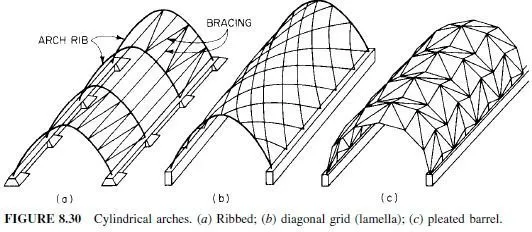Acceleration and braking of vehicular loads, and longitudinal wind, apply longitudinal loads to bridges. In highway bridges, the magnitudes of these forces are generally small enough that the design of main truss members is not affected. In railroad bridges, however, chords that support the floor system might have to be increased in section to resist tractive forces.
In all truss bridges, longitudinal forces are of importance in design of truss bearings and piers.
In railway bridges, longitudinal forces resulting from accelerating and braking may induce severe bending stresses in the flanges of floorbeams, at right angles to the plane of the web, unless such forces are diverted to the main trusses by traction frames. In single-track bridges, a transverse strut may be provided between the points where the main truss laterals cross the stringers and are connected to them (Fig. 13.4a). In double-track bridges, it may be necessary to add a traction truss (Fig. 13.4b).
When the floorbeams in a double-track bridge are so deep that the bottoms of the stringers are a considerable distance above the bottoms of the floorbeams, it may be necessary to raise the plane of the main truss laterals from the bottom of the floorbeams to the bottom of the stringers. If this cannot be done, a complete and separate traction frame may be provided either in the plane of the tops of the stringers or in the plane of their bottom flanges.
The forces for which the traction frames are designed are applied along the stringers. The magnitudes of these forces are determined by the number of panels of tractive or braking force that are resisted by the frames. When one frame is designed to provide for several panels, the forces may become large, resulting in uneconomical members and connections.



